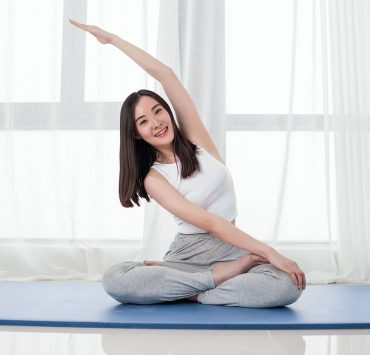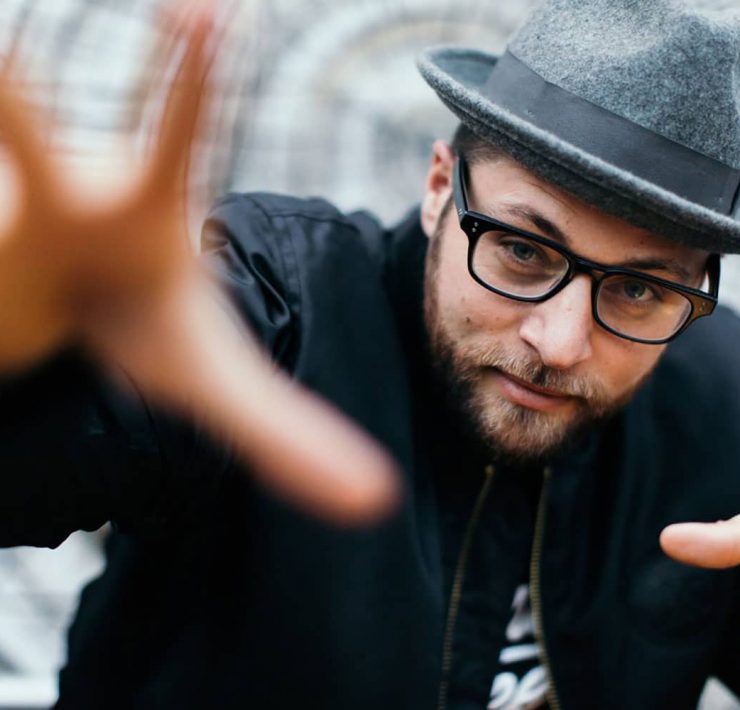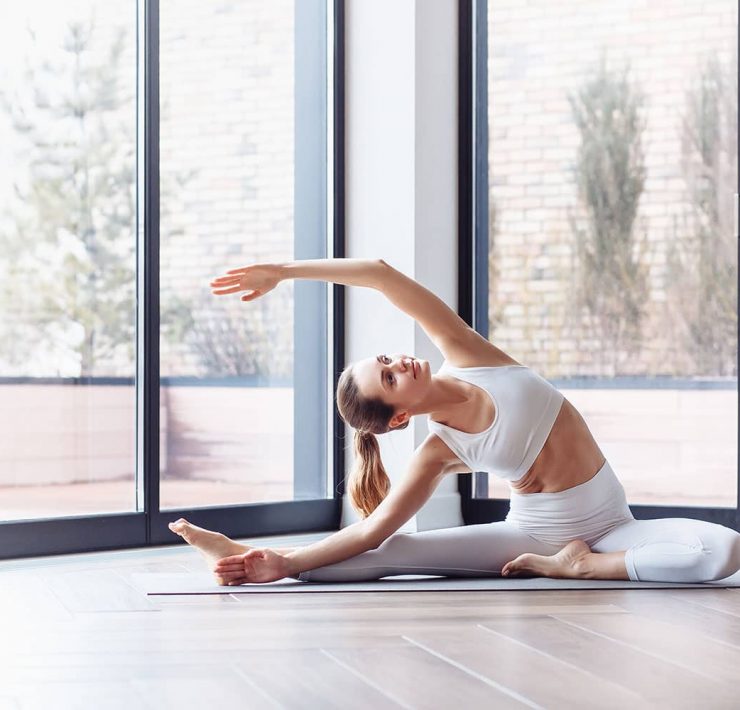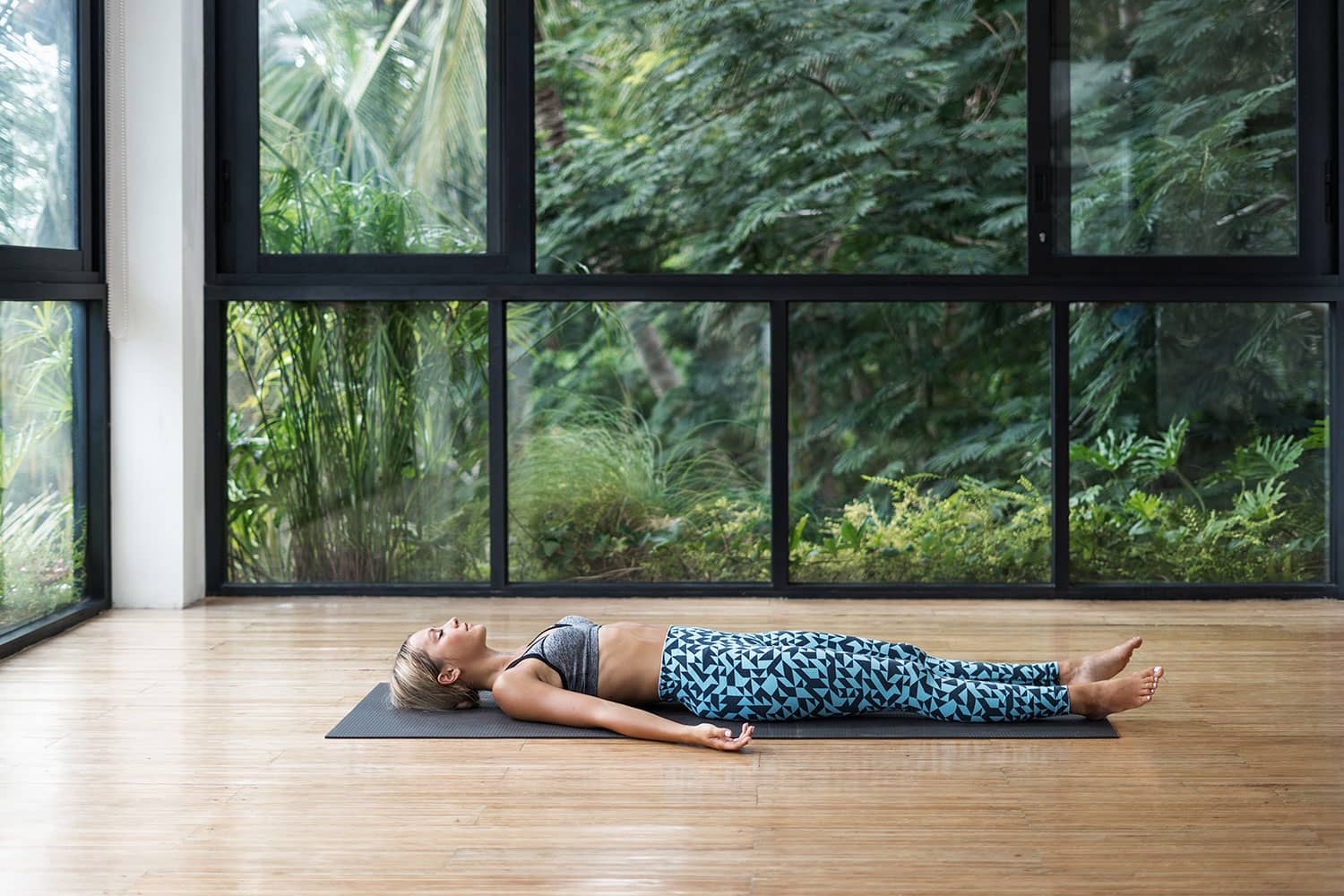
As a trained yoga professional and Ayurvedic practitioner, Donna goes…
Life can get messy, stressful, and chaotic. A great way to restore one’s energy is by practicing Yoga Nidra.
During Yoga Nidra, consciousness fluctuates between introversion and extroversion. Sometimes, it swings to the outside world through the physical senses. Other times, consciousness slides into the sphere of sleep. But over time, consciousness becomes more stable.
Yoga Nidra requires prolonged and systematic practice.
The Nidra state is the border between the alpha and theta waves. And once that state is reached, the mind becomes more receptive.
In the Nidra state, consciousness connects with the subconscious and unconscious dimensions. This space is of great importance. It allows us to discover and awaken our most immense potential. Normally, it lies dormant in the deep levels of our minds.
But accessing this part of ourselves provides us hidden solutions to all problems and conflicts.
Benefits of Yoga Nidra
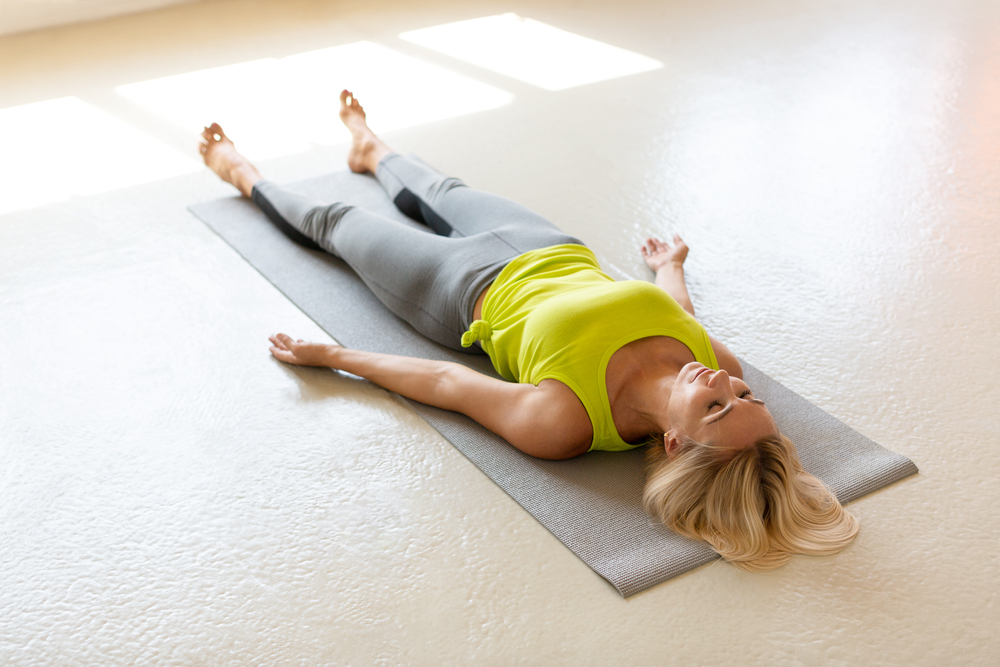
There are a large number of benefits to the practice of Yoga Nidra. Below are some positive effects that you can expect to achieve:
- Deep skeletal-muscular relaxation
- Removal of blockages and physical pain
- Balanced nervous system
- Increase in production of endorphins
- Lower levels of immunosuppressants
- Reduction of the rhythm of brain waves
- Harmonization of two brain hemispheres
- Stress relief
- Aids depression
- Relieves anxiety
- Mitigates insomnia
- Lowers risk of headache
- Soothes fibromyalgia
- Alleviates chronic fatigue
- Reduces hypertension
- One hour of Yoga Nidra equals four hours of natural sleep
- Development and use of non-analytical mind
- Develops personal growth
- Mental reprogramming and proposal of objectives
- Increased learning capabilities
- Strengthened memory
- Enhanced intuition
- Expanded creativity
- Spontaneous manifestation of inner potential and resources
- Cleansing of subconscious and limiting memories
- Lucidity to deal with conflict
- Deep meditative states
- Expansion of altered states of mind
- Integral harmonization
Sample Yoga Nidra Script #1 for Children
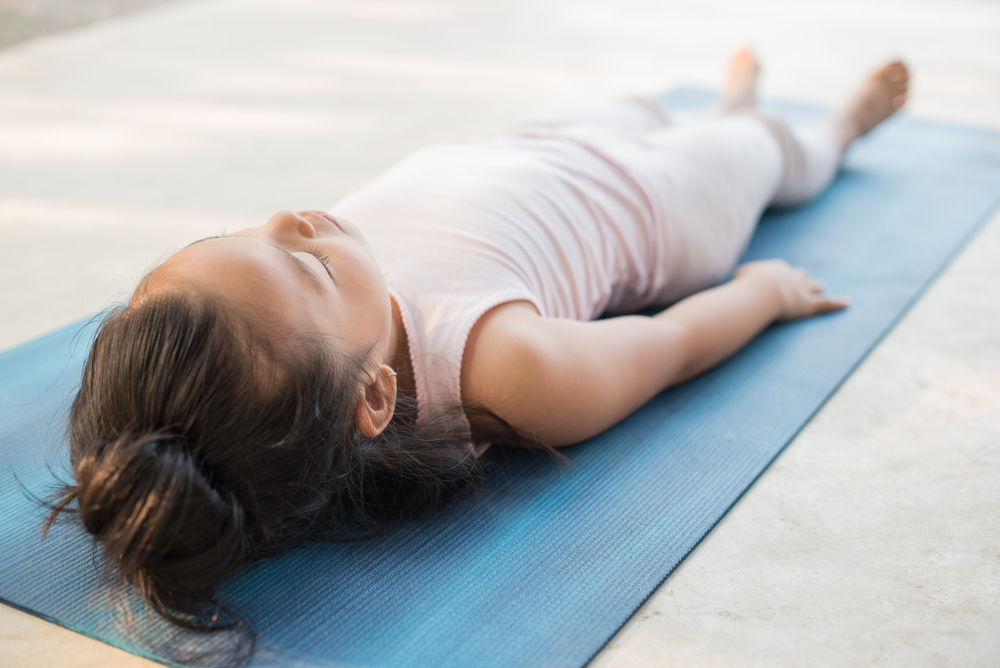
Below is a Yoga Nidra script that you can use to practice with children. This set should take about 10-15 minutes altogether. It is appropriate for kids of all ages.
Feel free to substitute your own words to make the script more effective for your purposes.
#1 Set Up
To begin your Yoga Nidra session, start by having your participants lie down on the floor. Make sure that you are in a comfortable and quiet environment.
Ask them to keep their eyes closed and follow the sound of your voice.
#2 Breathing
Instruct them to breathe in and out through their nose. Tell them to imagine that they are blowing up a balloon in their belly and slowly letting the air out.
#3 Progressive Muscle Relaxation
Ask them to relax every muscle in their body by squeezing and releasing. Lead them through this sequence a couple of times. Then allow them to relax. Tell them to focus on each muscle.
Try using the following script below.
“Tighten your hands as much as you can. Tighter… tighter… and now release. Now tighten your shoulders as much as you can, tighter, tighter… and now release”
#4 Counting Breaths from 40 to 1
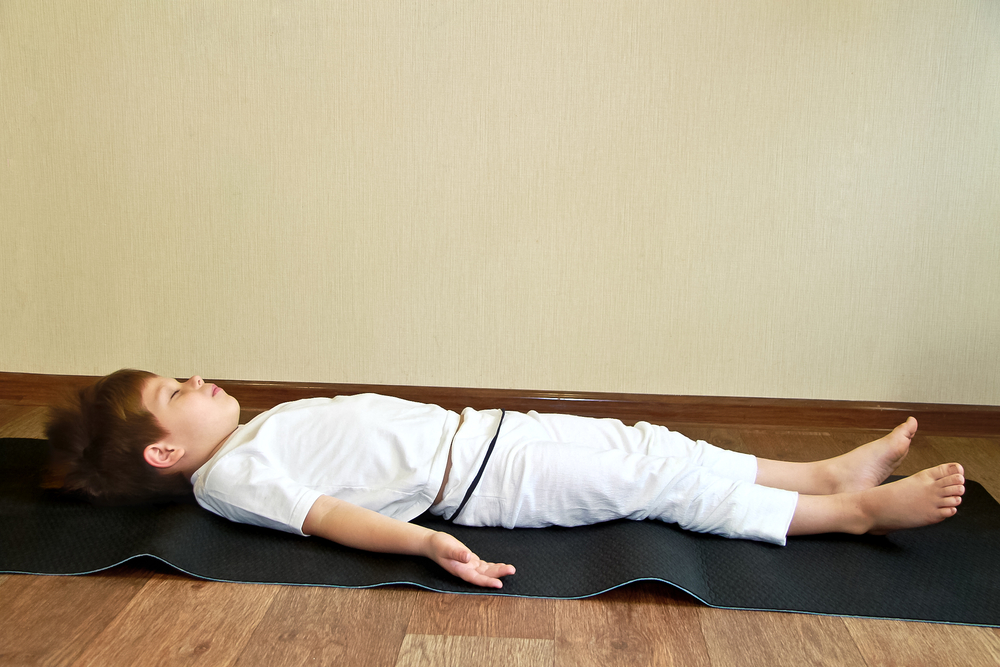
In a soothing voice, ask them to breathe in while mentally saying the number 40 in their head. Then breathe out and mentally say the number 39. On their next inhale, say 38. On their next exhale, say 37. Keep counting backward until you reach 1.
Tell them that it’s okay if they lose count. If they do, just begin again at 40.
Say positive and encouraging things to them. Tell them not to rush. And don’t feel frustrated.
Be friendly to your mind. If they want to fall asleep, that’s okay. If they forget to count, that’s also okay.
Just remind them to take a break and begin counting again. And always let them know that they can follow your voice.
#5 Revolving Awareness
In a soothing tone, guide them on a full-body tour. Pause for 3 to 5 seconds in between naming each body part. This will give them time to recognize sensations.
#6 Expanding the Light
Next, instruct them to share the wonderful light in their hearts. Tell them to think of all of the people in the world that they love.
Now tell them to imagine sending out a golden light.
That light is pouring out from their hearts. It is reaching their mother, father, sister, and brother. It is touching their friends, teachers, and everyone they know.
Now tell them to think of all of the people in the world. Imagine all of the people that could use some extra light in their lives. Tell them to send their light out to those people.
Tell them to imagine that all the world is sending that light back. As they send light out, they are also receiving light from within.
#7 Closing Breath
Lastly, tell them to breathe into their belly. Feel that light moving out and coming back in again. Tell them to feel their belly ballooning out and in. Remind them they are wonderful and special. And that the world needs their light.
Gently have them roll over to one side. Give them time to sit up on their own.
Sample Yoga Nidra Script #2
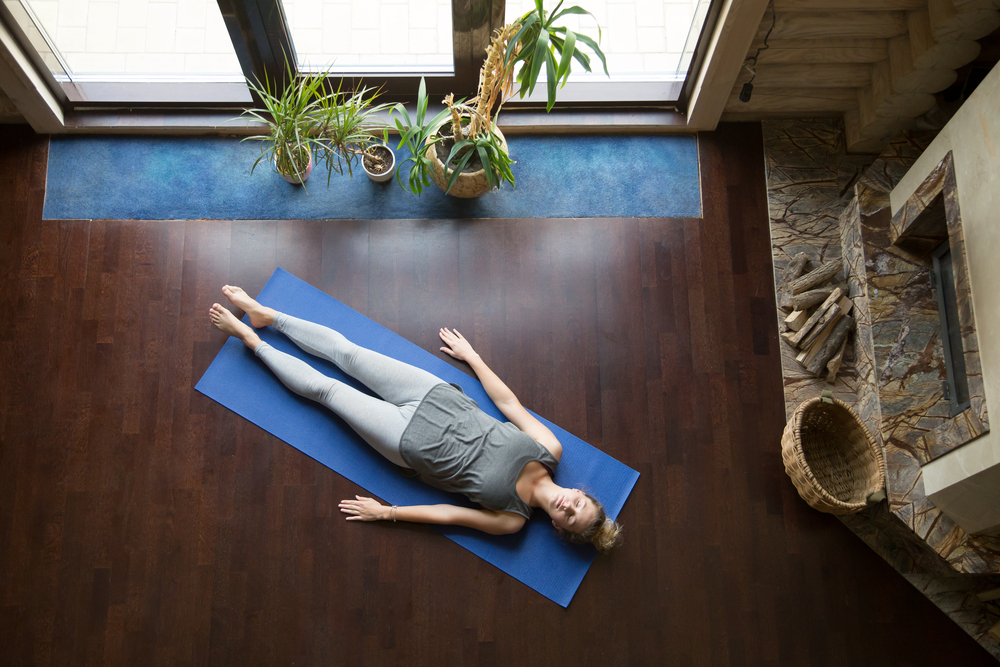
If you would like to try an alternative script, follow along with these guidelines below.
Prepare for Meditation
Bring a soft awareness of your surroundings. Feel the world around you. Listen to the sounds outside of this room. Listen to the sounds inside of this room.
Allow yourself to become aware of every sensation around you.
What do you hear?
What do you smell?
Are you cold?
Are you hot?
What is the temperature inside this room?
Visualize your body resting on the floor. Start to become aware of your own physical presence.
Find a Safe Haven
Start to move inward for a moment. See if you can discover a safe haven inside of you. This is a place where you feel safe. You feel secure, loved, and calm. Maybe there is a person there. Maybe you are in a specific place. Whatever helps you accentuate this feeling of safety. Wherever you are or whomever you are with, you are well and happy.
Spend a moment visualizing this place. You can return to this place anytime during the practice. You can even return to this place anytime in your life. During moments of stress, anxiety, and worry, recall this space.
This is your safe haven. This is your home.
Body Awareness
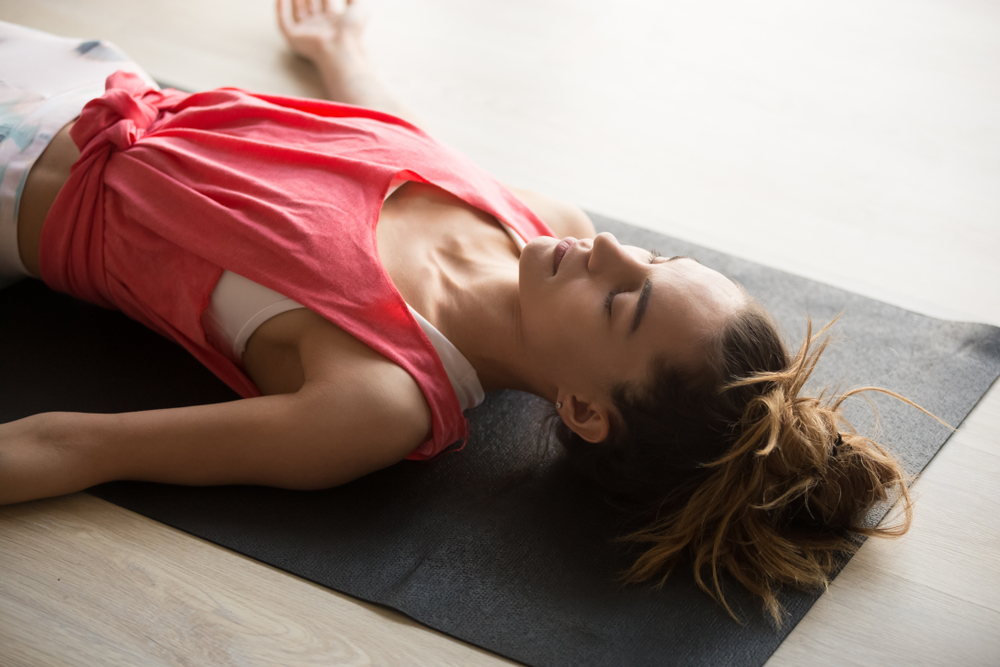
Now bring your awareness back to your body. You are resting on the floor. Remain as still as possible. Do not build up any stress in the body. But start to notice each part of the body as it is mentioned.
Recognize if this practice is easy or difficult for you. Then let it go.
Notice if there are parts of the body that are difficult to sense.
Now sense your entire body. Your whole body. Feel it all at the same time. Feel your entire physical presence.
Welcome Your Feelings
Start to bring awareness to your feelings. Do not judge your emotions. Do not try to change them. Just acknowledge any feelings and emotions that are currently with you.
If you notice tension, for example, acknowledge how that feels. Now, what is the opposite of that feeling?
Witnessing Your Thoughts
Come back to your breath. Start to notice any thoughts, memories, or images. Whatever arises in your mind. Be totally nonjudgmental. Whatever comes up is there for you to acknowledge.
Maybe you notice a belief or judgment about this practice. Acknowledge that. Then try to notice the opposite of this thought. Whatever it may be.
Explore this space of your consciousness.
Now visualize this series of images in your mind. I will repeat one image after the other.
Find Joy or Bliss or Spiritual Center
Recall a memory that holds great joy for you. Let it fill you with peace. Let it linger. Here, imagine and remember all of the details of this memory. Live in it once more.
Reflect on the Practice
Now, reflect on how this practice made you feel. Remember to repeat your original intention. Recall that affirmation. Then move outward once more.
Start to become aware of your body. Become aware of your breath. Become aware of the room around you.
In your own time, begin to move away from this practice. Start to move your body. Change positions. Stretch.
Sample Yoga Nidra Script #3
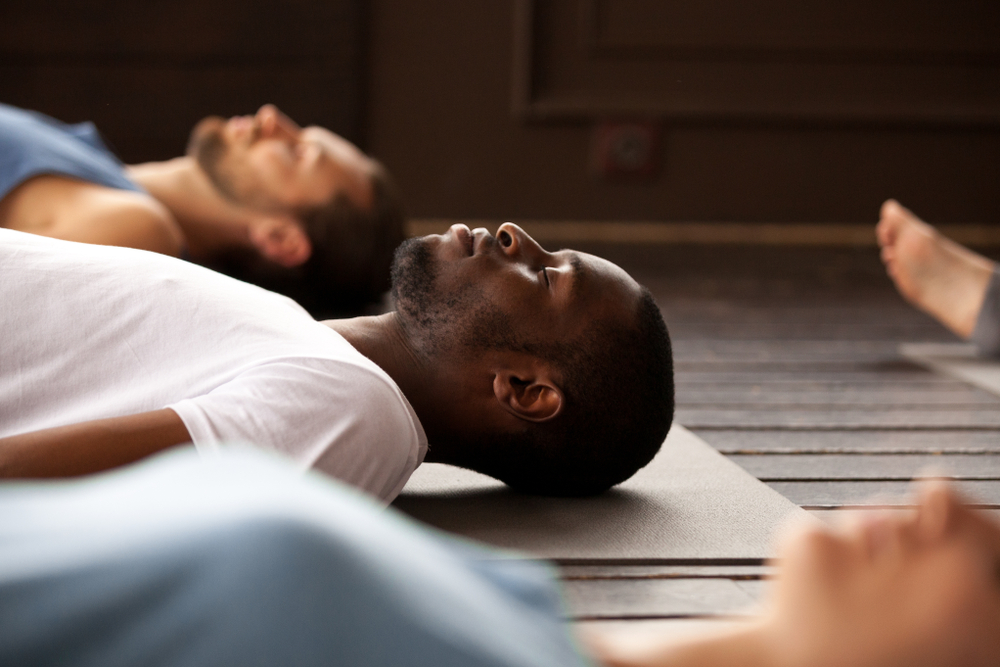
Try this sample script that delves a little bit deeper into Yoga Nidra.
Entry
Let your body sink. Feel it sinking into the body. Get comfortable in your position. Shift and move as needed. Let your body settle down. Settle deeper into the ground. Feel comfortable. And know that everything is ok.
Nothing else matters right now. Everything is alright. There is nowhere to go. There is nothing else to do.
There is simply here and now. Just feel your body and listen.
Do not let worry or agitation cross your mind. If you do not everything I say, that is okay. There is a natural flow to these things. You will flow in and out of conscious hearing. And each is valid and okay.
The deepest part of you is always listening. Your core is always present.
Whatever you may experience today, know that this practice will work. There is no wrong way of doing this. Just submit to your body. To this practice. To my voice.
You are safe. You are in a safe space. It is protected. It is a held space. Now, come to stillness. And remain still for deep rest. You will experience deep nourishment. You will feel your natural breath.
Allow your breath to flow through your bones. And let your bones become heavy.
Feel your bones sink into the earth. Then release. Release your bones heavy. And feel them sinking further and further down.
Sankalpa
Now, go deep inside. Notice what your heart desires. What is its deepest longing? From here, create your Sankalpa. This is an affirmation. It is an intention. It is based on your heart’s longing. And it is a positive statement in the present tense.
For example, you can try saying this internally:
“I flow through life with ease and peace. I am relaxed”
Now, find your own Sankalpa. State it three times.
Body Scan
Allow your awareness to travel. Let it explore your body. Let it sense every sensation. Feel each part of the body as I mention it. Without moving, feel your body. Be welcome to all sensations.
We will start with the mouth. Feel your jaw, lips, upper lip, lower lip. Notice where the lips touch.
What does the inside of the mouth feel like?
Can you feel the roof of your mouth?
Under your tongue?
Your upper teeth and gums?
Start to notice the taste in your mouth. Feel your left inner cheek. And now your right inner cheek. Feel all parts together now.
Feel your mouth as a sensation. It is energy. It is a radiant vibration.
Breath and Prana Awareness
Bring your awareness to your breath. Let your natural breath flow in and out. Feel the air as you breathe in through your nose. Feel it as you exhale. Let go of any tension your body may be carrying.
As you inhale, let your whole body bring in a wave of calm. As you exhale, let that wave flow down through your body. It is taking away your fears.
Inhale a fresh wave of serenity. Exhale all anxiety and distress.
Sample Yoga Nidra Full Script
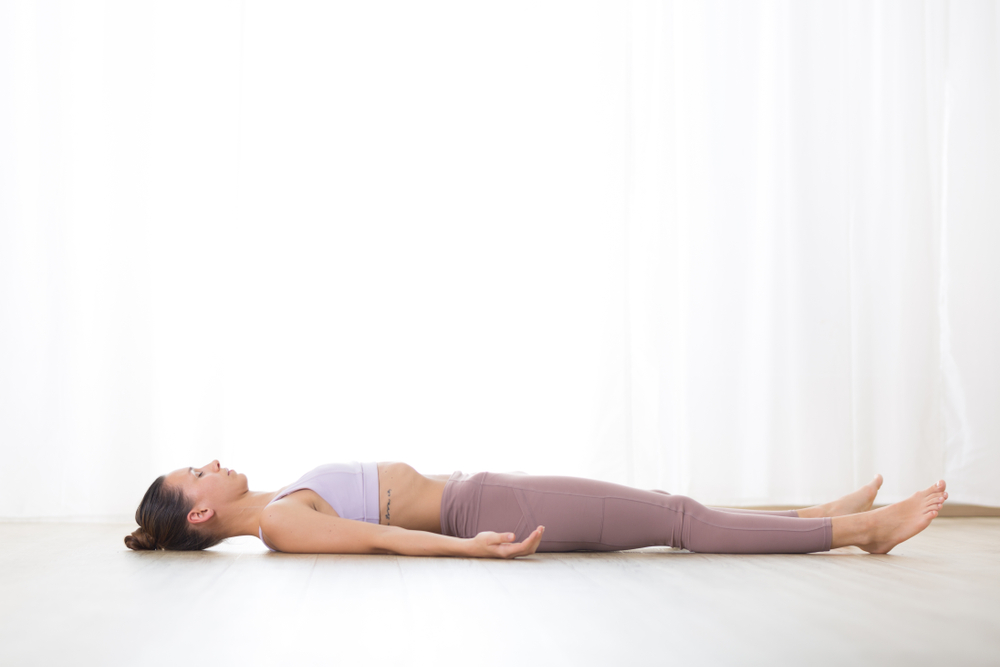
If you would like a full script for a Yoga Nidra session, you can use the script below. Remember to take pauses and deep breaths in between sections. Pace yourself just as you remind your participants to breathe and relax.
Introduction
It is now time for Yoga Nidra. You can start this session by laying on your back. Keep your knees slightly bent and make sure they are supported.
Be sure that you are warm enough for this session. You should find yourself in a comfortable position. You will stay in this position for the duration of this practice.
It is best to remain still during Yoga Nidra. This way, the body, and the brain will have a chance to fully relax. If you are uncomfortable at any time, feel free to change positions. You can shift your posture and find what feels good to you.
Allow your eyes to close at this time. Keep them closed until the practice has ended.
The practice of Yoga Nidra is a practice of Yogic Sleep. I will be guiding you to a hypnagogic state.
This is the state of consciousness between wakefulness and sleep.
Try to remain awake by listening to the sound of my voice. I will ask you to move your awareness to different parts of the body. You will explore different sensations, emotions, and images.
Try not to concentrate too intensely on any of these. This may prevent you from relaxing.
During this meditation, use and absorb what you need at this moment. Leave the rest behind. If your mind is overactive, come back to the sound of my voice. Let go of your thoughts and worries. And focus on only the sound of my voice.
Relaxation
Start to become aware of the sounds that you hear. Do not strain to hear anything. But start to focus on every sound around you. Focus on the most distant sounds you hear. Let your sense of hearing radiate outward.
Seek out the most distant sounds. And follow them for a few moments. Move your attention from sound to sound.
Do not label the source. Just explore these sensations.
Gradually bring your attention to sounds closer to you. What do you hear outside of this building? What do you hear inside of this building? What do you hear inside of this room?
Without opening your eyes, visualize this room. Visualize the four walls and the ceiling. Notice the floor and your body lying on the floor. See your body and notice the position of your body. Visualize your clothes, hair, and face. Start to become aware of your physical body.
Feel yourself existing on the floor.
Awareness of Breath
Begin to become aware of your natural breath. Your natural and spontaneous breath. It moves in and out of your body. It takes hardly any effort. Feel your breath flow in through your nostrils. Notice the feeling of your breath as it comes out of your nostrils.
Do you sense the coolness of your inhale? Follow that feeling. Follow it into your nose and sinuses. Follow it to the back of your throat and into your lunges.
Feel that sense of warmth as you exhale.
That warmth on your upper lip as you breathe out. This natural breath flows through your nostrils. You can feel it in each inhale and exhale.
Allow this breath to become longer and slower. Take in a long, slow inhalation. Then follow it with a longer, slower exhale.
Make that exhale longer than your inhalation. Even take a slight pause after your exhale.
Slowly inhale. And exhale even slower. Pause here. Feel the urge to breathe bubble up inside of you. If you need to inhale, please do so.
Now take in a long and slow inhale. And let out a longer and slower exhale. Pause where your body is neither breathing in or out.
Continue to breathe this way. Slow inhale. Slower exhale. Pause here. Slow inhale. Slower exhale. Pause.
Now go back to your natural easy breath.
Sankalpa
The practice of Yoga Nidra begins now. At this moment, make your Sankalpa. This is your resolve. It can be short and positive. It should be a statement in simple language. Try to discover one naturally.
State your Sankalpa clearly three times. Become aware of its value.
This Sankalpa is a seed. And you are planting it in your mind. This will bring about transformation and healing.
After you state your Sankalpa, say “I am practicing Yoga Nidra. I am awake and relaxed.”
Rotation of Consciousness
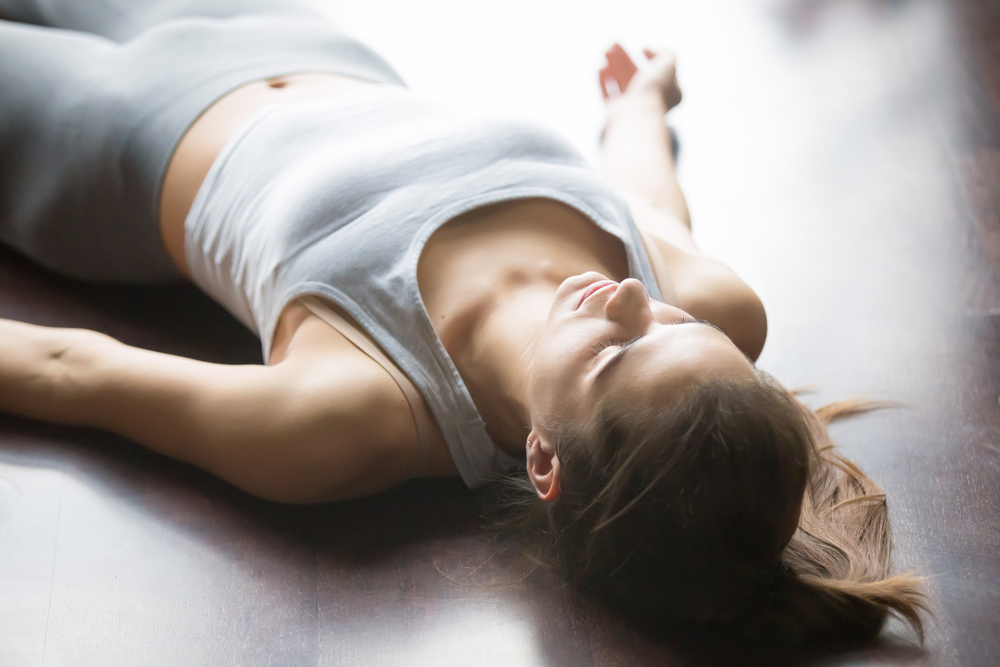
Now we will begin a systematic journey of our sensory awareness. We will explore the various parts of our body.
Move your awareness to these body parts as you hear them.
When you hear them, repeat that name to yourself. Feel that part of the body. But do not move any part. The practice will begin on the right side.
- Right-hand thumb
- 2nd Finger
- 3rd Finger
- 4th Finger
- 5th Finger
- Palm of the hand
- Back of the hand
- Wrist
- Forearm
- Elbow
- Upper Arm
- Shoulder
- Armpit
- Waist
- Hip
- Thigh
- Knee
- Calf
- Ankle
- Heel
- Sole of the foot
- Top of the Foot
- Right Big Toe
- 2nd Toe
- 3rd Toe
- 4th Toe
- 5th Toe
Now bring your awareness of the left side.
- Left-hand thumb
- 2nd Finger
- 3rd Finger
- 4th Finger
- 5th Finger
- Palm of Hand
- Back of the Hand
- Wrist
- Forearm
- Elbow
- Upper Arm
- Shoulder
- Armpit
- Waist
- Hip
- Thigh
- Knee
- Calf
- Ankle
- Heel
- Sole of the Foot
- Top of the Foot
- Left Big Toe
- 2nd Toe
- 3rd Toe
- 4th Toe
- 5th Toe
Now bring your awareness to the back of your body.
- Right heel
- Left heel
- Right calf
- Left calf
- Right thigh
- Left thigh
- Right buttock
- Left buttock
- Lower back
- Middle back
- Upper back
- The entire spine
- Right shoulder blade
- Left shoulder blade
- Back of the neck
- Back of the head
Now bring your awareness to the top of your head.
- Forehead
- Right temple
- Left temple
- Right ear
- Left ear
- Right eyebrow
- Left eyebrow
- Middle of the eyebrows
- Right eye
- Left eye
- Right Nostril
- Left nostril
- Right cheek
- Left cheek
- Upper lip
- Lower lip
- Both lips together
- Chin
- Jaw
- Throat
- Right collarbone
- Left collarbone
- Right side of the chest
- Left side of the chest
- Upper abdomen
- Navel
- Lower abdomen
- Right groin
- Left groin
- The pelvic floor
- The whole right leg
- The whole left leg
- The whole right arm
- The whole left arm
- The whole face
- The whole head
- The Whole torso
- The whole body
- The whole body
- The whole body
Opposite Sensations
Lightness/Heaviness
Imagine that your whole body is becoming light. Feel as if you could float away. Float from the floor and toward the ceiling.
Your head is light and weightless.
Your limbs are light and weightless.
Your torso is light and weightless.
Rise higher and higher away from the floor
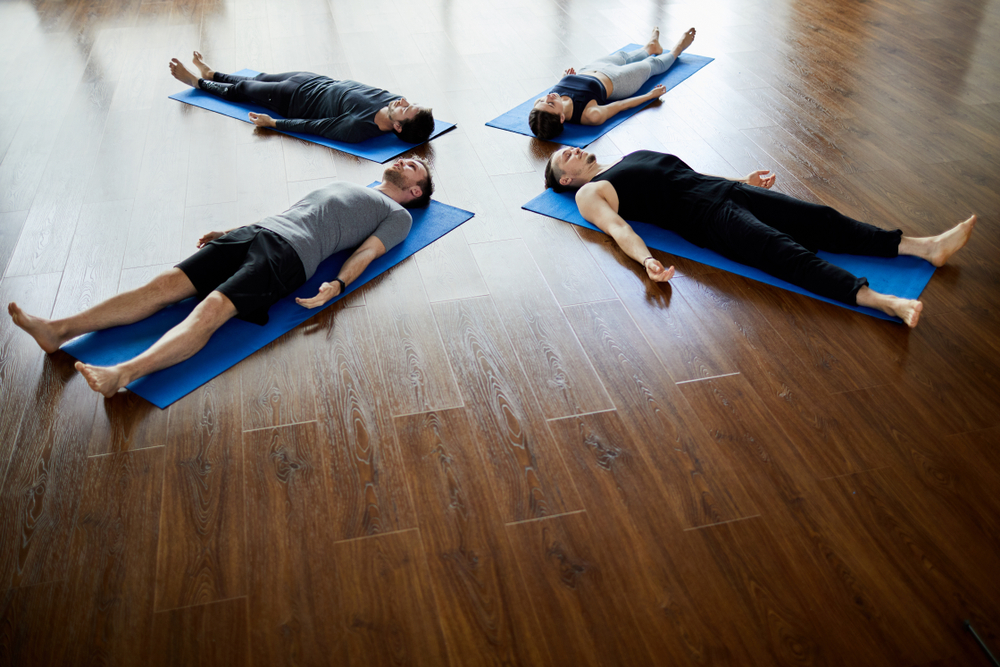
Now imagine your body becoming heavy. Feel heaviness in all parts of your body. Each part is becoming heavier. And heavier.
Your head is heavy.
Your limbs are heavy.
Your torso is heavy.
Your whole body is heavy.
Feel this heaviness and sink into the floor.
Cold/Hot
Awaken the experience of cold in the body. Experience a chilly cold. Imagine being outside in winter. And without enough clothing on. Feel this chill permeating your entire body.
Now allow the sensation of warmth to spread.
Spread it throughout your whole body. Remember that feeling of heat in the summer. You’re outside in the sun with no shade. Feel that heat radiating onto your skin. There is heat all around your body.
Anxiety/Calm
Recollect the experience of anxiety. Feel that intense anxiety. Experience that severe sense of worry. Feel stress in the mind and the body. Do not concentrate on the source. Create the experience of anxiety as clearly as possible.
Now allow yourself to feel calm.
Manifest this experience of calm. Feel it throughout your entire body. Feel calm in your mind and in your emotions. Feel relaxed and aware.
Inner Space Visualization
Concentrate on the space in front of your closed eyelids. Imagine a transparent screen as though you are at a movie theater. The screen is as high and as wide as your eyes can see.
Concentrate on this mental screen. Become aware of any phenomena that manifest within it. Are there colors? Are there patterns? Are there different beams of light?
Whatever you see, let it manifest. Continue this awareness. Explore this space. But do not become involved.
Practice detached awareness only.
Let subtle images be known. Notice them without directing images. If thoughts occur, let them come and go. Continue watching this dark space. Continue in your detached awareness.
Rapid Image Visualization
I am going to name a number of different things. You should envision them on every level. These levels can be emotional. They can be rooted in memory. They can be created from your imagination.
Jump from image to image as soon as you hear it said.
- Red desert
- Peacock feather
- Buddha meditating
- Good night’s rest
- Full moon
- Reflection in the mirror
- Foggy morning
- Waiting for results
- Sun shining overhead
- Bouquet of flowers
- Tall tree
- Receiving help from others
- Cool clear water
- Relaxing afternoon
- Laughing with friends
- Warm embrace
- Burning candle
- Temple on mountain
- Path in woods
- Vibrant sunset
- Taking in a deep breath
- Cat stretching
- Beautiful garden path
- Favorite song
- Sound of my voice
- Your body lying on the floor
Repeat Sankalpa
It is now time to repeat your Sankalpa. Repeat the same statement you made at the beginning of practice. Say it mentally three times now.
Return
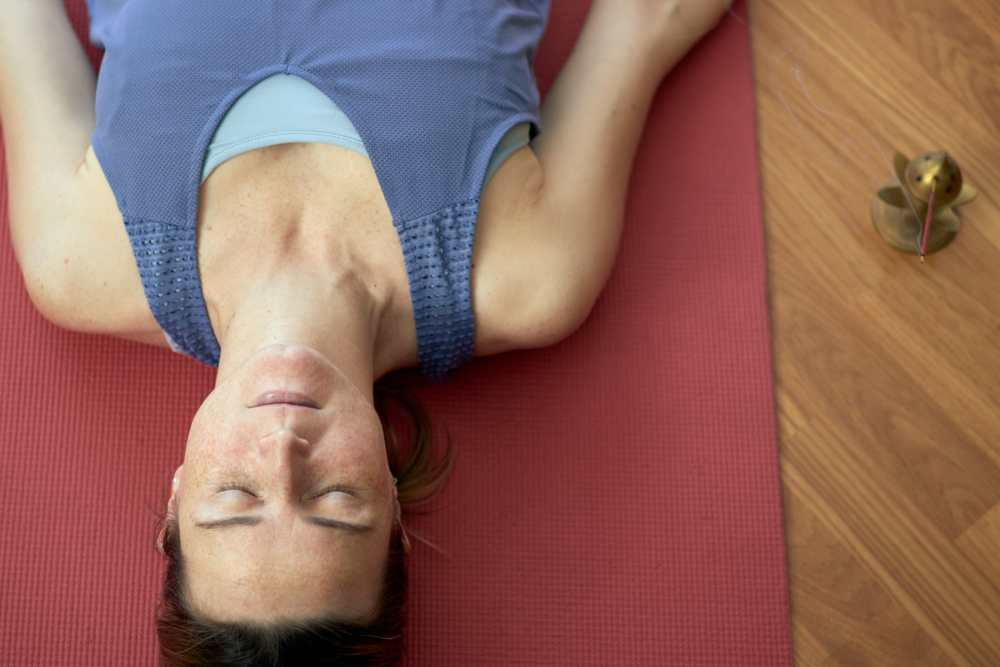
Come back to this feeling of breath. Let it flow in and out of your nostrils. Maintain this awareness of your breath. At the same time, start to develop an awareness of your physical body. Feel yourself relaxed and lying on the floor.
Feel the container of your skin. Feel your clothes. And feel the props touching you.
Notice the heaviness of your body. Feel it resting on the floor. Take awareness of all of the points of your body touching the floor.
Feel the back of your heels. Your thighs. Your buttocks. Your shoulder blades. Your arms. Your hands. Your head.
Do not open your eyes yet. First, visualize the surrounding room. Imagine where you are in the room. Imagine the other objects around you.
Lie quietly here until you are ready to move. Then slowly begin to move your hands and feet.
Take your time. There is no rush. There is no hurry.
When you are fully awake, gently open your eyes. Roll over onto your right side. Stay here on your right side for a few moments.
Then use your hands to press yourself up from the floor. Let your head come up last.
Your practice of Yoga Nidra is now complete.
Namaste.
What's Your Reaction?
As a trained yoga professional and Ayurvedic practitioner, Donna goes far beyond just writing about holistic concepts. With your health and wellness in mind, she happily provides an abundance of thoughtful and well-written information.







